This article was co-authored by Julian Arana, M.S.eD., NCSF-CPT. Julian Arana is a Personal Trainer and the Founder of B-Fit Training Studios, a personal training and wellness set of studios based in Miami, Florida. Julian has over 12 years of personal training and coaching experience. He is a certified personal trainer (CPT) by the National Council on Strength and Fitness (NCSF). He has a BS in Exercise Physiology from Florida International University and an MS in Exercise Physiology specializing in strength and conditioning from the University of Miami.
There are 11 references cited in this article, which can be found at the bottom of the page.
This article has been viewed 114,305 times.
Excess belly fat, or visceral fat, is associated with higher risks of diabetes, heart attack, stroke, and other health issues.[1] While imaging scans, such as a CT scan or MRI, are the most accurate ways to measure belly fat, they’re expensive and not accessible for most people. Fortunately, you can estimate your belly fat and related health risks by simply measuring your waist circumference and calculating your waist-to-hip ratio.[2] If you're concerned about your measurements, try to eat a balanced diet, get more exercise, and discuss your overall health with your doctor.
Steps
Measuring Your Waist Circumference
-
1Stand with your feet together and belly exposed. Take off your shoes and stand up straight with your abdomen relaxed. Slouching could throw off the measurement. For more accurate measurements, take your shirt off or wear one that’s skin-tight.[3]
-
2Place a measuring tape around your waist in line with your navel. Use a flexible cloth measuring tape. Place it against your skin between your lowest ribs and hip bones. It should be roughly level with your belly button.[4]
- As you wrap the measuring tape around your waist, make sure to keep it straight and parallel with the floor.
Advertisement -
3Measure your waist just after exhaling. Breathe out normally, but don’t suck in your stomach. Make sure the measuring tape is straight and without any kinks, then note your waist circumference.[5]
- If you’re measuring in inches, round to the nearest tenth of an inch. If you’re measuring in centimeters, round to the nearest centimeter.
- Write down your measurement if you think you might forget it.
-
4Interpret your measurement. If you’re a man, a waist circumference over 40 inches puts you at a higher risk of developing obesity-related health conditions, such as diabetes, heart attack, or stroke. If you’re a woman and aren’t pregnant, a waist circumference over 35 inches is considered high risk.[6]
- For men, a measurement of 37.1 to 39.9 inches is considered intermediate risk. For women, intermediate risk is between 31.6 to 34.9 inches.
- If you’re measuring in centimeters, 94 to 101 cm indicates an intermediate risk for men, and a measurement above 102 cm is high risk. For women, 80 to 87 cm is intermediate risk, and circumferences above 88 cm are considered high risk.[7]
- There are no standards for waist circumference for pregnant women, children, and teenagers.[8]
Calculating Your Waist-to-Hip Ratio
-
1Measure your waist circumference at the navel. Stand up straight and place the measuring tape to your bare waist between your lowest ribs and hip bones. Exhale normally, then measure your waist circumference. Write the number down and label it so you don’t confuse it with your hip measurement.[9]
-
2Measure your hips at their widest point. For an accurate measurement, wear a skintight article of clothing or place the measuring tape directly against your skin. Wrap the measuring tape around the widest part of your hips. This is usually around where your thighs meet your hips and the lower part of your hip bones point out to your sides.[10]
- Keep the measuring tape parallel with the floor and free of any kinks or twists. Write down your hip measurement and label it so you don’t confuse it with your waist circumference.
-
3Take your measurements twice. Since taking your waist-to-hip ratio involves multiple numbers, there’s a higher chance of making an error. Taking your measurements twice will help you ensure they’re accurate.[11]
- If your measurements don’t match up, measure yourself a third time and go with the measurement it matches.
-
4Divide your waist size by your hip size and interpret your results. It doesn’t matter if you’re measuring in inches or centimeters, as long as both waist and hip measurements use the same unit. For men, a ratio higher than 0.95 indicates an increased risk of health issues. For women, increased risk starts at a ratio of 0.85.[12]
- For example, if you’re a man with a waist circumference of 36 inches (91 cm) and a hip circumference of 40 inches (100 cm), your ratio is 0.9, which is just below the increased risk benchmark.
Consulting Your Doctor
-
1Consult your doctor if you're concerned about your measurements. Waist circumference and waist-to-hip ratio are inexpensive and easy ways to measure belly fat. There’s a lot of evidence that they can accurately predict your risk of developing obesity-related health issues. However, they’re meant to give you a rough idea of your health. Only a medical professional can accurately diagnose obesity-related disorders.[13]
-
2Ask your doctor about imaging scans. Imaging scans, such as a CT scan and MRI, are the most accurate ways to measure belly fat, but they’re expensive and not readily available for most people.[14] A DXA, or dual x-ray scan, is more affordable, but still requires a doctor’s orders.[15]
- For most people, taking waist and hip measurements is the best way to estimate belly fat and to understand associated health risks.
-
3Get a physical exam and blood tests to assess your overall health. Your doctor can give you an exam and order blood tests, such as blood glucose and cholesterol tests. These assessments can help you better understand your health status and risks.[16]
-
4Discuss ways to improve your health with your doctor, if necessary. If you’re overweight or obese, try to focus on improving your health instead of on losing weight alone. Set goals related to choosing healthy foods and getting more physical activity instead of the number of pounds or kilos you want to shed.[17]
- Do your best to maintain a healthy diet. That includes limiting the amount of sugar you consume (too much sugar can cause the body to start storing fat) and consuming less in general.[18] Overconsumption is one of the biggest causes of obesity.[19] .
- Try to get 30 minutes of exercise per day. Ask your doctor for advice about starting an exercise routine, especially if you’re not used to physical activity.
- Focusing on developing a healthier lifestyle can help you stick to your goals and maintain a positive mindset.
Expert Q&A
Did you know you can get expert answers for this article?
Unlock expert answers by supporting wikiHow
-
QuestionWhat is the ideal belly size?
 Julian Arana, M.S.eD., NCSF-CPTJulian Arana is a Personal Trainer and the Founder of B-Fit Training Studios, a personal training and wellness set of studios based in Miami, Florida. Julian has over 12 years of personal training and coaching experience. He is a certified personal trainer (CPT) by the National Council on Strength and Fitness (NCSF). He has a BS in Exercise Physiology from Florida International University and an MS in Exercise Physiology specializing in strength and conditioning from the University of Miami.
Julian Arana, M.S.eD., NCSF-CPTJulian Arana is a Personal Trainer and the Founder of B-Fit Training Studios, a personal training and wellness set of studios based in Miami, Florida. Julian has over 12 years of personal training and coaching experience. He is a certified personal trainer (CPT) by the National Council on Strength and Fitness (NCSF). He has a BS in Exercise Physiology from Florida International University and an MS in Exercise Physiology specializing in strength and conditioning from the University of Miami.
Certified Personal Trainer
References
- ↑ https://www.ncbi.nlm.nih.gov/pmc/articles/PMC3473928/
- ↑ Julian Arana, M.S.eD., NCSF-CPT. Certified Personal Trainer. Expert Interview. 19 May 2020.
- ↑ https://www.health.harvard.edu/staying-healthy/abdominal-obesity-and-your-health
- ↑ https://www.health.harvard.edu/staying-healthy/taking-aim-at-belly-fat
- ↑ https://www.cdc.gov/healthyweight/assessing/index.html
- ↑ https://www.health.harvard.edu/staying-healthy/abdominal-obesity-and-your-health
- ↑ https://www.healthdirect.gov.au/body-mass-index-bmi-and-waist-circumference
- ↑ https://www.hsph.harvard.edu/obesity-prevention-source/obesity-definition/how-to-measure-body-fatness/#waist-circumference
- ↑ https://www.health.harvard.edu/staying-healthy/abdominal-obesity-and-your-health
- ↑ https://www.health.harvard.edu/staying-healthy/abdominal-obesity-and-your-health
- ↑ https://www.hsph.harvard.edu/obesity-prevention-source/obesity-definition/how-to-measure-body-fatness/
- ↑ https://www.health.harvard.edu/staying-healthy/abdominal-obesity-and-your-health
- ↑ https://www.health.harvard.edu/staying-healthy/taking-aim-at-belly-fat
- ↑ https://www.health.harvard.edu/staying-healthy/abdominal-obesity-and-your-health
- ↑ http://www.cnn.com/2011/HEALTH/expert.q.a/09/30/body.fat.testing.jampolis/index.html
- ↑ https://www.cdc.gov/healthyweight/assessing/index.html
- ↑ https://www.healthdirect.gov.au/body-mass-index-bmi-and-waist-circumference
- ↑ http://sugarscience.ucsf.edu/the-growing-concern-of-overconsumption/#.Wi3Bczdry00
- ↑ https://www.nytimes.com/2015/06/16/upshot/to-lose-weight-eating-less-is-far-more-important-than-exercising-more.html
- ↑ Julian Arana, M.S.eD., NCSF-CPT. Certified Personal Trainer. Expert Interview. 19 May 2020.
About This Article
To measure your belly fat, you'll need to take your waist and hip sizes. First stand up straight and wrap a measuring tape around your navel to take your waist size. Breathe out normally and take the measurement before you inhale. To calculate your waist to hip ratio, measure your hips at their widest point. Then, divide the waist size by your hip size. For men, a ratio higher than 0.95 indicates an increased risk of health issues. For women, it’s above 0.85. If you're concerned about your measurements, try to eat a balanced diet, get more exercise, and discuss your overall health with your doctor. For more tips from our Personal Training co-author, including how to get blood glucose and cholesterol tests, read on.


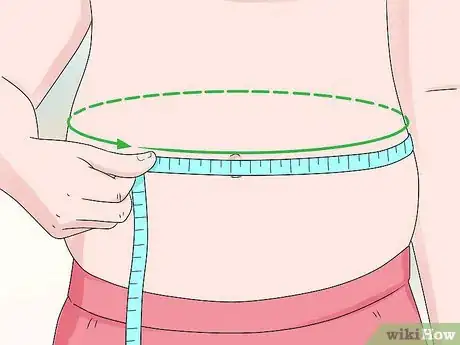
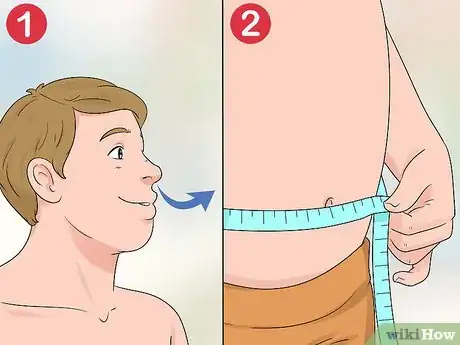
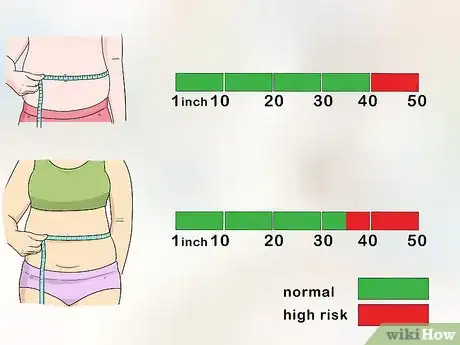

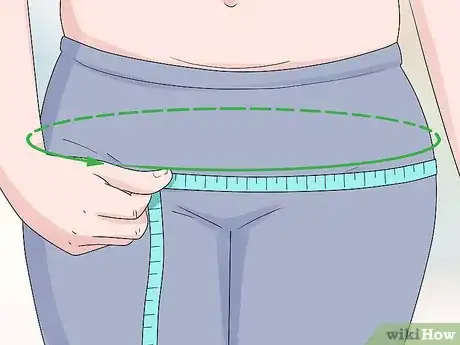

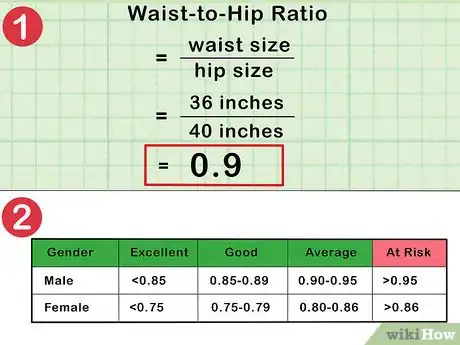






-Step-14.webp)
-Step-14.webp)



-Step-14-Version-3.webp)

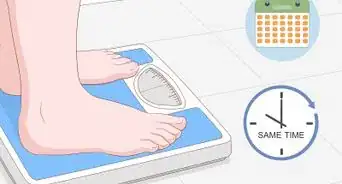












-Step-14.webp)
-Step-14.webp)



































Medical Disclaimer
The content of this article is not intended to be a substitute for professional medical advice, examination, diagnosis, or treatment. You should always contact your doctor or other qualified healthcare professional before starting, changing, or stopping any kind of health treatment.
Read More...